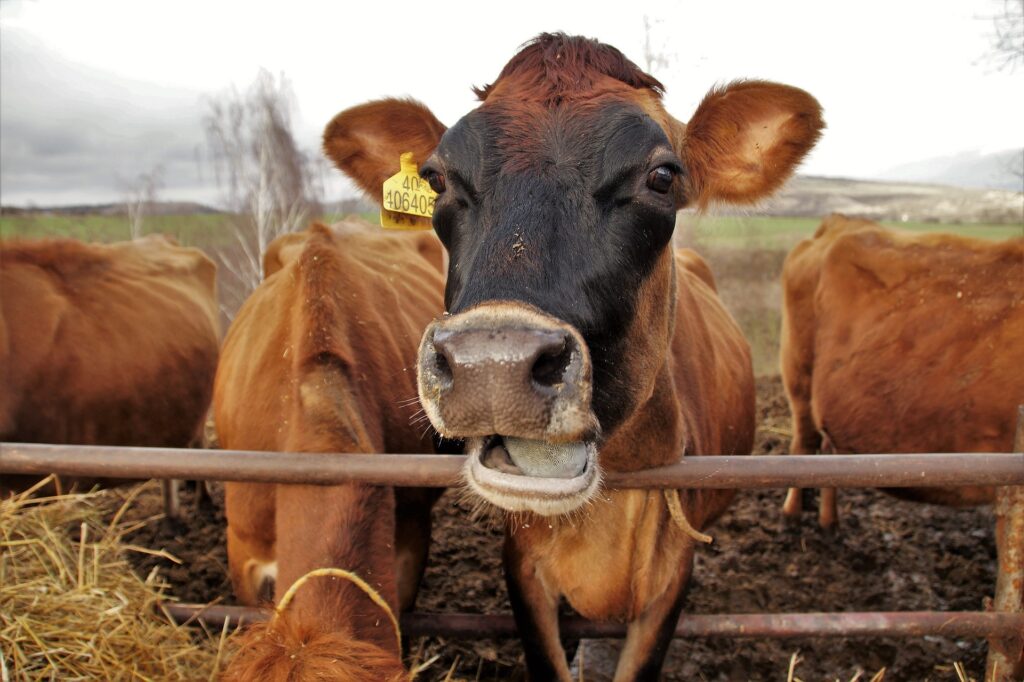Cows are not the new coal — here’s why
Opinion by Joseph W. Mcfadden for The Hill
The United Nations COP26 global climate summit announced a commitment to cut 30 percent of global methane emissions by 2030, and as with any other major announcement about climate change, a torrent of strong opinions and misinformation has spread to identify the next biggest scapegoat — or in this case, cow.
The reason for climate-centered pandemonium is that beef and dairy cattle emit methane from the enteric digestion of feed they consume and the manure they create. The annual Inventory of U.S. Greenhouse Gas Emissions and Sinks Report, prepared by the EPA, states that 27 percent of methane emissions in the United States are derived solely from enteric fermentation by livestock; albeit, less than 10 percent of total greenhouse gas emissions come from crop and animal agriculture in the United States. Models estimate that the global warming potential of methane is 25 times greater than carbon dioxide, in the short term — but methane and carbon dioxide emissions are approximately 10 percent and 80 percent of total greenhouse gas emissions respectively in the United States.
Yes, all sectors — including agriculture — need to reduce emissions, but a dangerous narrative has emerged, supported by the livestock investor network FAIRR Initiative, that “cows are the new coal.”
This is misleading and diverts our attention away from the discovery and application of meaningful solutions that reduce greenhouse gas emissions and slow the progression of climate change in the near and distant future. Here’s why:
Cattle are part of a natural biogenic carbon cycle, which is not the case for coal. Put simply, this means cows recycle carbon to the atmosphere that was and will again be absorbed by plants. Methane that is released by cattle burps enters our atmosphere, where it is transformed into carbon dioxide. This carbon dioxide is then used by plants to produce carbohydrates, and ultimately, cellulose. Cellulose is an insoluble fiber in the human diet, but cows and their microbiome have the means to digest this complex carbohydrate to support muscle (meat) and milk synthesis, which humans consume for nutrition and health.
If the global cattle population stays constant, no additional methane would enter the atmosphere after a decade. In fact, the world has maintained a steady population of cattle since at least 2010 — approximately 1 billion head.
The scientific models that aim to estimate the aforementioned global warming potential of methane compare emissions at the point of emission but don’t account for the flow of carbon as a part of this natural carbon cycle. Therefore, we are likely overestimating the global warming potential of methane derived from cattle.
Animal agriculture deserves our support because the meat and milk that cattle produce are nutrient-dense foods high in protein and key micronutrients such as B-vitamins, iron, and calcium.
Subscribe to RANGE magazine
You may also like
-
Advertising in Australia is used to push green propaganda
-
Ecologist goes undercover to expose eagle deaths cause by wind turbines
-
Omnibus bill provision would “unleash” electronic tracking on nation’s cattle
-
Arizona rancher sues to stop million-acre national monument
-
VDH: How to Destroy the American Legal System



I wonder how much methane pollution is due to government operations and activities.
I also wonder bout how much methane is part of the large herds of migrating wildebeasts.
Keep in mind there are lots of theory and unknowns. Supposed climate experts are simply a drip under pressure.
Gotta have climate change for more funding. It’s kind of simple.